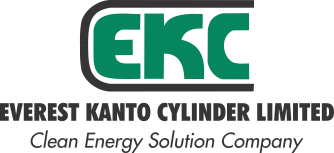The cylinder must be installed in the vehicle using the following guidelines.
If the cylinder is to be removed, transported, or stored, the defined handling procedures are necessary to prevent injuries from the personal or damage to the cylinder itself. The cylinders must be transported carefully, to ensure that no damage occurs to the superficial protective painting. The cylinders can only be handled when depressurized. Safety shoes must we worn to protect the feet when transporting cylinders.
The cylinders will be handled with hands free from sand, grease, oil, or any other substance that may contribute to slippery, burning, or contamination to the surface of the cylinder or its neck-thread. The cylinders should not be handled, transported or grabbed by their valves or pressure relief devices. They must not be struck.
The cylinders must be stored in the following way:
The cylinders must be locked to prevent them from rolling or moving during the storage. When the neck-threads of the cylinders do not contain connectors or valves, plastic protective stoppers must be placed to prevent dust from going inside the cylinder. The stored cylinders must be protected from corrosive environments. Rubber stripes must be placed in between the cylinders, during their storage, so as not to cause corrosion on the surface of the cylinders. Specific elevation tools or devices will be used when required. Stowage must be done in a dry place, under shed, to protect the cylinders from the effects of the sun, rain, etc.

